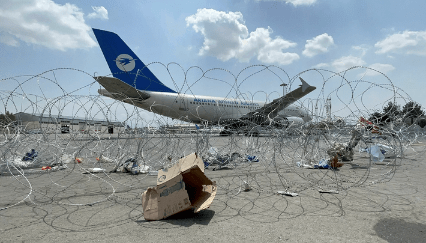
Five Afghans planned to hijack commercial aircraft during Kabul evacuation
In a Wednesday bulletin about the August evacuation from Kabul’s Hamid Karzai International Airport, the US Air Force (USAF) unveiled many new details about the operation, including that airmen successfully prevented a planned hijacking of a commercial airliner by some of the evacuees.
The article, about how airmen helped prepare for Noncombatant Evacuation Operations (NEO) from Afghanistan beginning in July, well before the sudden collapse of the US-backed Afghan government in mid-August, highlighted many elements of the chaotic situation never before seen.
“The hair on the back of your necks should be standing up; this is not the Afghanistan we all knew,” USAF Col. Russell Cook, commander of the 23rd Wing, told a group of airmen at a mission briefing on July 23.
“I knew this was going to be different – all of the assumptions and experiences from the past in Afghanistan were invalid,” Cook said in the article. “I spoke with the leadership before they left and made sure they understood that. By the time they walked out the door, I was 100% confident that the team was ready to execute their critical life-saving mission in the most challenging of environments.”
The Biden administration was firmly set on August 31 as the deadline for withdrawing all remaining US assets from Afghanistan, ending the 20-year-long occupation war that killed at least 240,000 people.
The US had made a ceasefire agreement with the Taliban to be out of the country by May 1, but US President Joe Biden arbitrarily extended the withdrawal date by several months.
Meanwhile, the Sunni extremist group launched a widespread offensive that brought most of the country under its control by early August. By August 14, with US personnel evacuations far from complete, then-Afghan President Ashraf Ghani suddenly fled the capital city ahead of the Taliban’s arrival, and the group captured the city without a fight.
The capture, at least a month before it was expected, forced the US timetable up and set off a series of critical events, including the mobbing of the airport by hundreds of thousands of would-be refugees, many of them collaborators with the US occupation who Washington had promised to take with them when they left.
The US marshalled aircraft both military and civilian to the airport, along with 6,000 troops in case of an attack by the Taliban or another group, such as Daesh-Khorasan or al-Qaeda.
Source: Sputnik News





